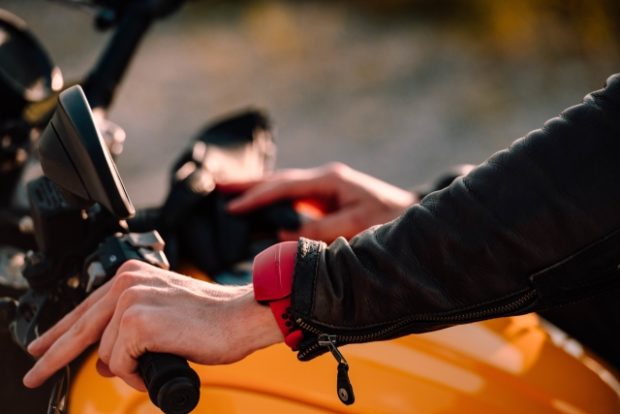
Motorcyclists can wear the Sentinel device on their wrist or on their belt. Image: courtesy of Motobit
The Austrian startup Motobit has unveiled a wearable device aimed at motorcycle riders. The device uses vibrations to communicate with riders at all times, so they can stay focused on the road and stick to an appropriate speed to help prevent accidents. This innovative device is available exclusively via the crowdfunding website Indiegogo, priced from €109 (approx. US$128).
The device, called Sentinel, connects to the rider’s smartphone over Bluetooth and has its own specific application. On the road, riders receive warnings about potentially dangerous situations thanks to a haptic feedback system causing the device to vibrate. Sentinel should ideally be worn on the wrist, but it can also be carried in a pocket or on a belt.
Thanks to its advanced algorithms, Sentinel analyzes users’ riding behavior and the course of the road to alert riders when they’re going too fast, especially on bends. This can help prevent skidding and other accidents.
Motobit has opted to use haptic feedback as a way of communicating with motorcyclists instead of audio or visual notifications. This allows riders to stay focused and keep their eyes on the road. Plus, in the event of an accident, emergency contacts can be messaged at the touch of an easily accessible button.
Note that Sentinel also has a group riding mode. If several friends all have the wearables, for example, they can set a maximum distance to maintain between riders. In other words, if one biker can’t keep up, the other members of the group will be automatically notified.
Sentinel is the fruit of more than two years of research and is now available via the Indiegogo crowdfunding platform. The first shipments aren’t expected until spring 2021. NVG
RELATED STORIES:
Overcoming the pandemic on bikes, these Filipino women defy monsters on the road
396 million wearables to be sold in 2020 despite COVID-19 — report